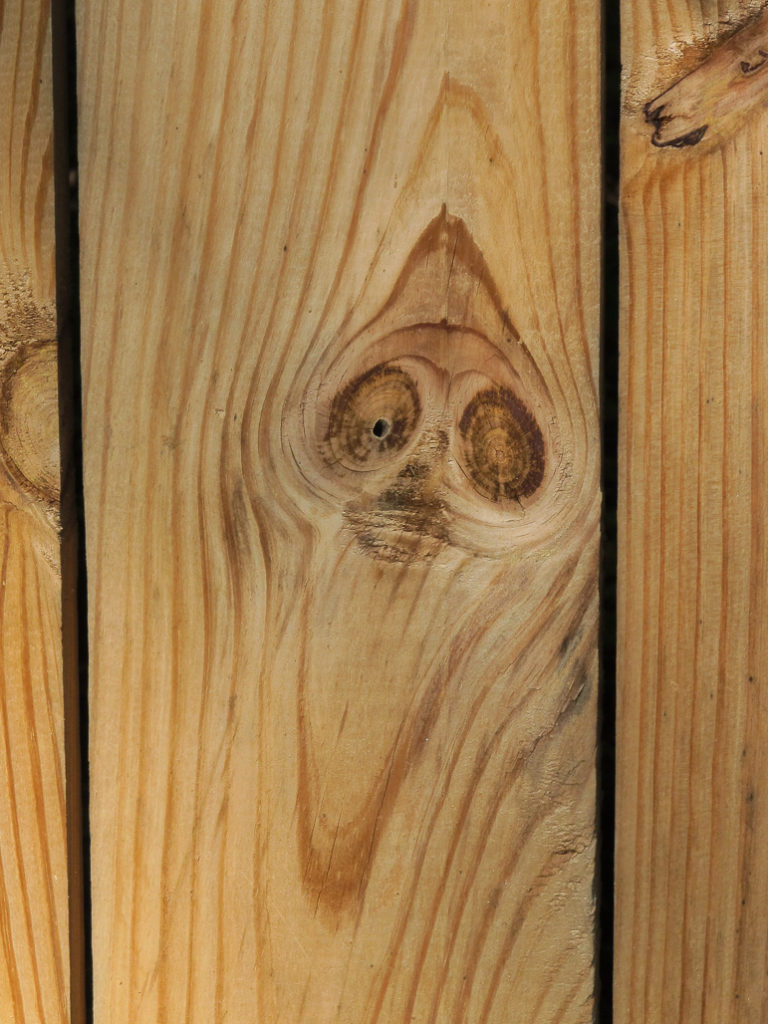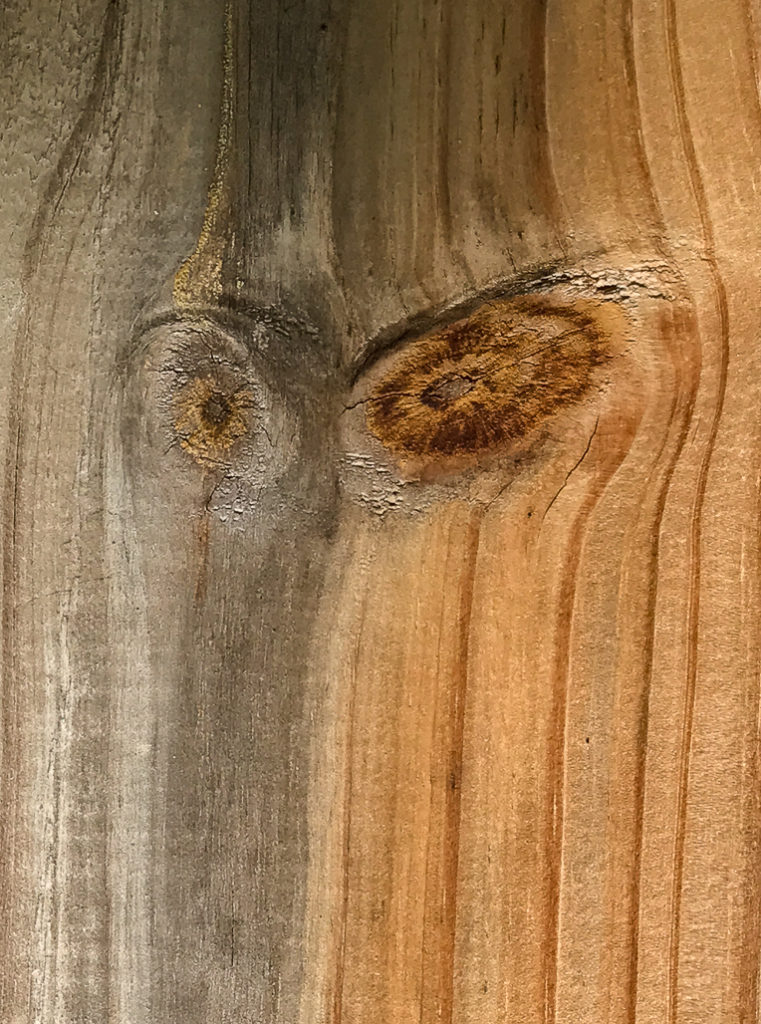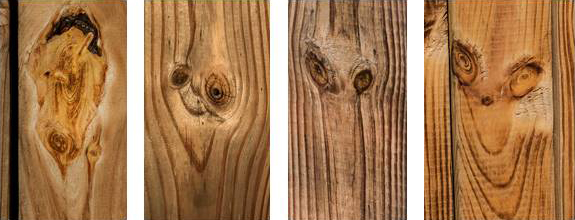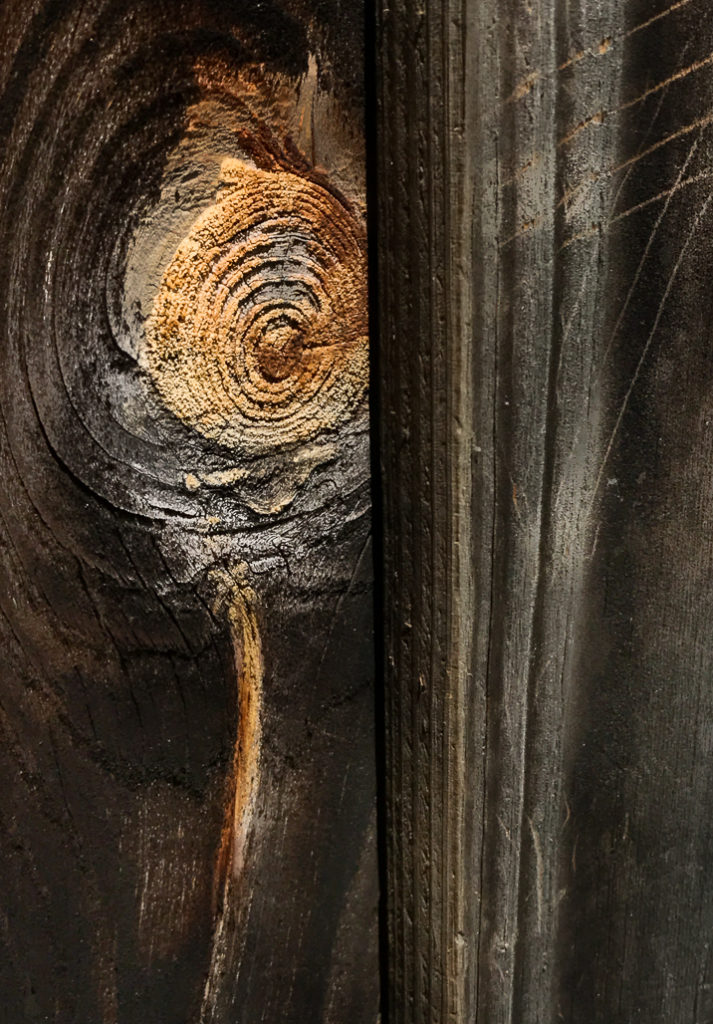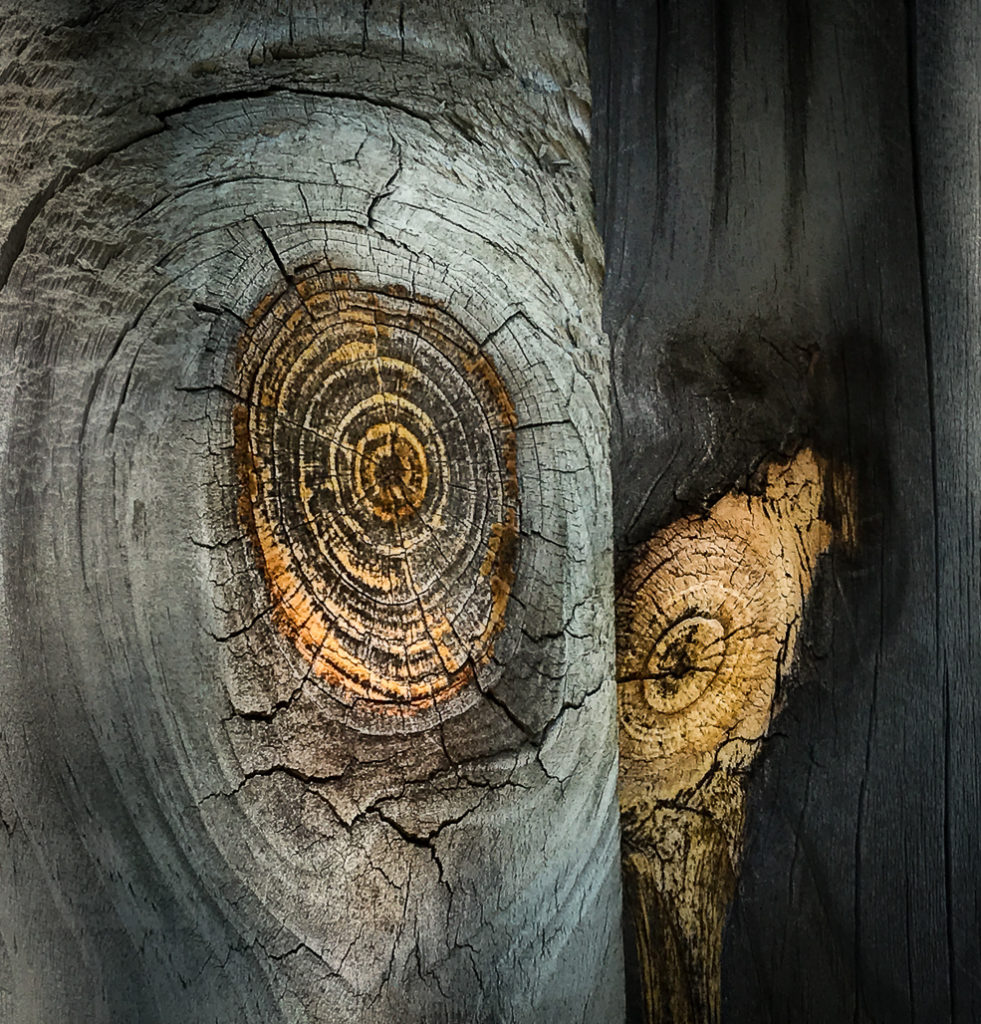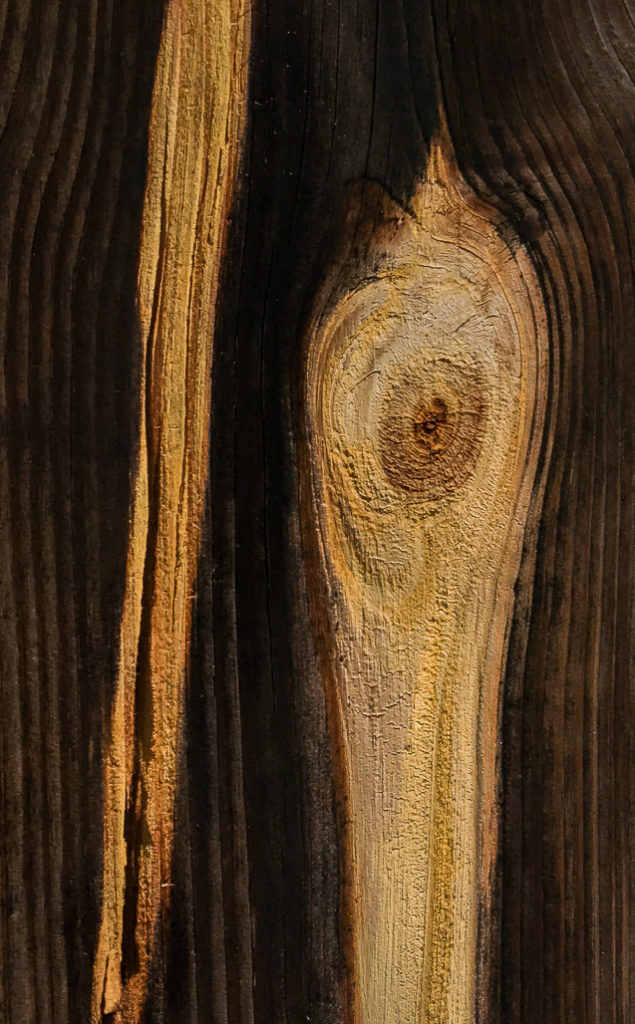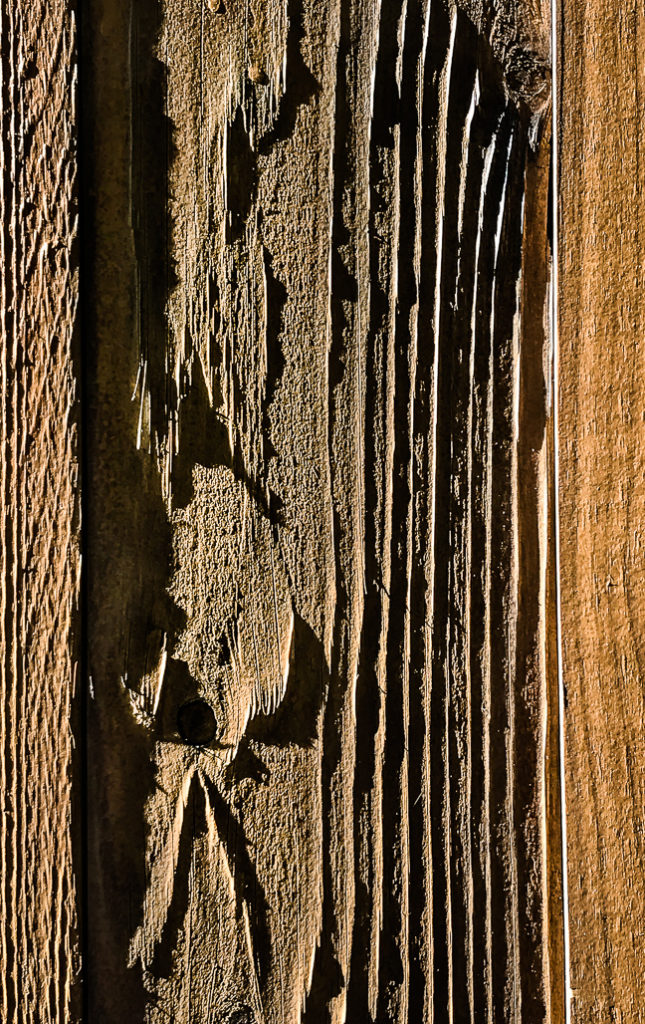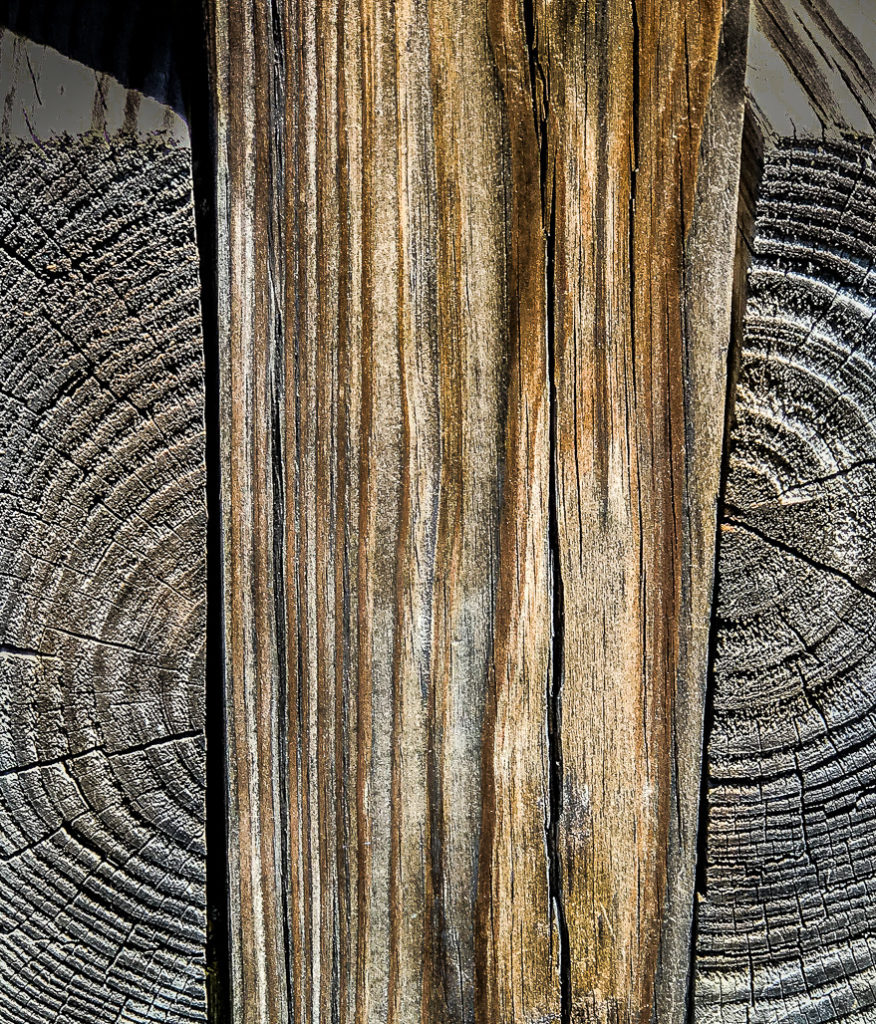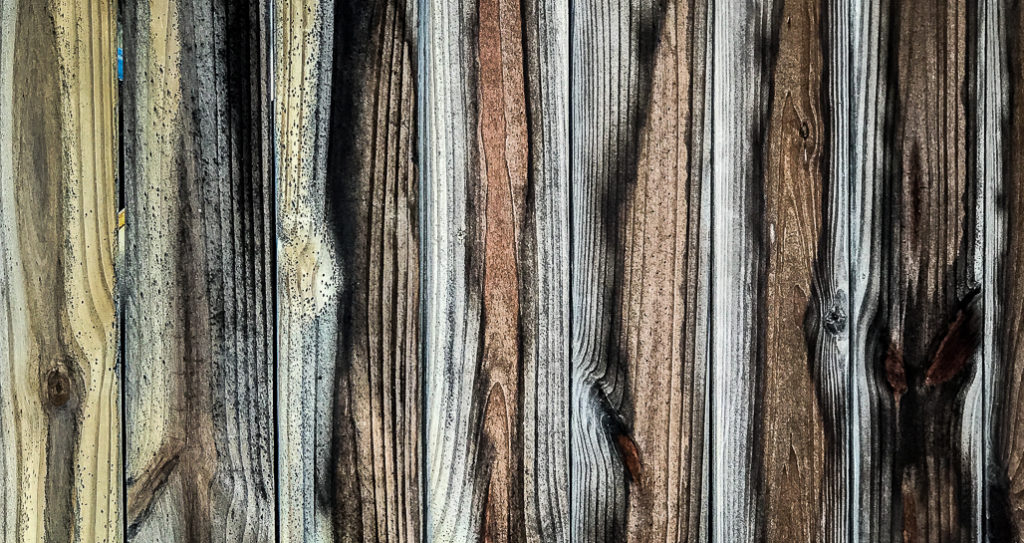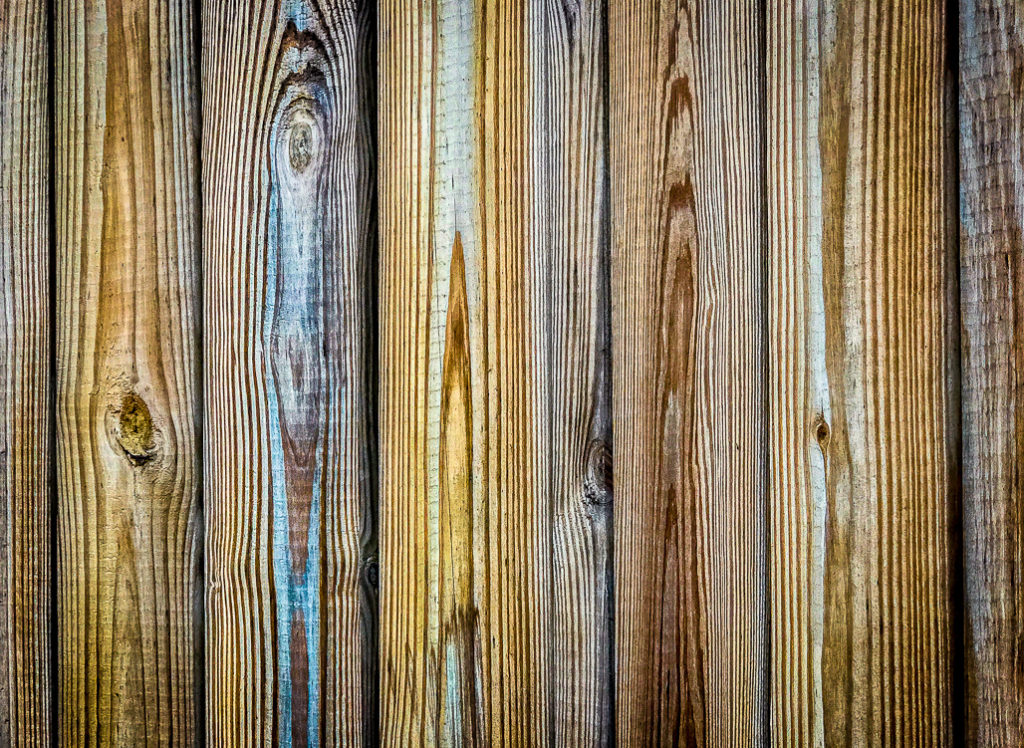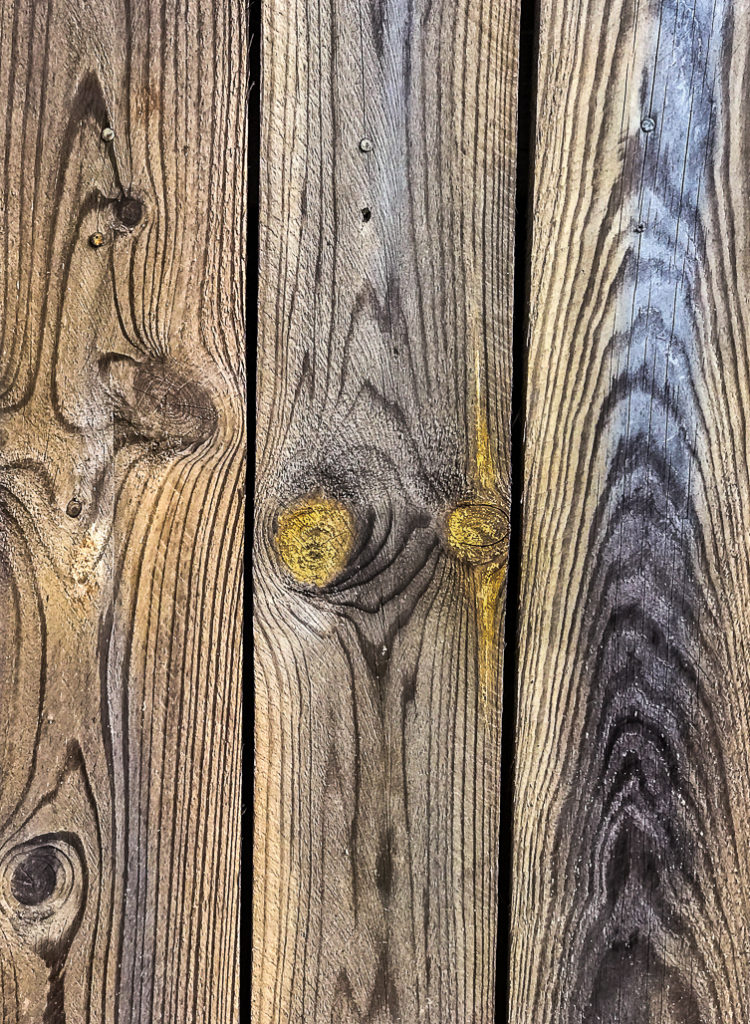What is Fence Art? When I look up fence art in Google Images, I find mostly examples of fences on which people have painted colorful images or have affixed decorative objects. By fence art, I mean something entirely different. To me, fence art consists of the forms, colors, and textures that naturally appear on the wood from which fences are made. The emphasis is on naturally occurring. Granted, many wood fences are pressure treated (they are not 100% natural). However, wood fences display richly varied and appealing patterns, particularly as enhanced by changing weather and gradual decay. It is these natural patterns that I seek to creatively capture in my fence art photographs.
I discovered fence art in one of my many exercise walks around my neighborhood. I try not to take photographs on these walks, so I did not have my DSLR with me (or even my advanced point and shoot). But of course, I had my iPhone. I spent an hour that first day photographing two side-by side fences adjacent to a public sidewalk, and I then returned multiple times, with my different cameras. I have since photographed many other fences as well. At first I was drawn to recognizable forms on the wood grain of the fences—images that looked like people or animals. I soon, though, became even more enraptured by the beautiful abstract forms I found on the fences.
Fence Art: Images of People & Animals
An unusual number of fences project images that look like faces, either human faces or those of various kinds of animals. At least I perceive faces on the fences. I found these fences intriguing since no one has intentionally sculpted these faces, yet they contain precise and vivid detail. What do you see in the following two photographs?
In the first, I see an old man or a wizard, almost in the style of William Blake, British poet and artist. In the second, I see the eyes of an owl peering out at me.
Sometimes these fence-faces do not yield interesting enough photographs in themselves, but I still revel in (and take photographs of) the multiplicity of faces that appear. The variety in mood and apparent personality of the animal or person, across images, is striking.
Fence Art: Found Abstracts of Shapes, Texture, and Color
I have also enjoyed photographing different kinds of found abstracts. A found abstract is something discovered intact in the environment that contains patterns, colors, lines, textures, or shapes, and that does not represent something recognizable such as a person, landscape, or building. I do engage in some post processing with these found abstracts. For example, I may alter saturation or contrast, modify white balance, or sharpen the image. I sometimes rotate the image horizontally or vertically. I may remove small distractions like spots from the photograph. However, I do not move elements from one photograph to another or even from one place to another within a photograph to create my own design. I intentionally limit post processing, so that the finished photograph represents what I saw with my eyes at the moment of capture.
The following two images are examples of some of the abstract shapes I discovered on fences in my neighborhood. Each includes two fence panels. The first looks somewhat like a flower, but is dominated by its combination of circular rings and vertical and diagonal lines. The second lacks altogether any obvious reference to a recognizable object.
Occasionally, as in the following image, I will count a wood beam that supports a fence or an outdoor wood staircase, railing, or walkway as fence art. I find these images still project fenceness—the abstract forms could easily have constituted part of a fence panel. I rotated this next image 90°. Note that this photograph illustrates a simpler abstract design than the previous two, helping to show the range of abstract shapes that appear on fences.
In some of my fence art images, texture is the dominant feature, although the texture intersects with the lines and shapes in creating the image’s impact. For example, I was particularly drawn to the texture of the fences in the following two images, but the straight and diagonal lines, as well as the triangular and circular shapes contribute importantly to the individual character of the fences.
(In this latter image, the wood supported an outdoor walkway and railing.)
The fence art that emphasizes shape or texture gains impact as well from variations in color and tone. However, certain fences emphasize contiguous strips of color more than any other dimension. To some extent, these fences remind me of the paintings of the American artist Morris Louis. The following two images provide examples of images where strips of color dominate.
This next—and final—photograph provides a good summary of my fence art explorations and the abstract variety in even a small segment of a single fence. The fence contains a human-like face and body in the first panel, a complex abstract shape in the second panel, and a vertical display of color in the third panel. The texture is subtle, but a key unifier of the image. All of these attributes are caused by the natural grain of the wood, weather, and decay over time.
Fences could be photographed in many ways other than as found abstracts. The photographer could emphasize the symbolic meaning of a fence: For instance the photographer could photograph a white picket fence surrounding a house to signify the dream of owning a home, or a high fence between two yards to signify divisiveness between neighbors. Alternatively, the photographer could show a fence in context, as part of a wide and beautiful landscape. None of these represent my intention.
My intention has centered around capturing close views of fences to express my wonder at their naturally occurring and yet artistic abstract forms and face-like shapes. Realizing this intention presents certain artistic challenges.
The first main challenge has stemmed from the intrinsic verticalness of fences. How do I combat the verticalness to create dynamic images that lead the viewer’s eye around the frame? The second challenge has involved creating coherence out of the multiple abstract shapes that can appear randomly positioned on a given fence. In particular, since I am not creating or moving shapes, how do I use the frame effectively, through cropping, to connect the shapes? And finally, in taking fence-art photographs for eight months, I have witnessed—with delight—minute variations in the abstract patterns of wood fences. This article on fence art presents a series on these photographs partly with the goal of communicating through juxtaposition of images. But to what extent do the photographs each individually have an impact on a viewer who does not begin by being as entranced by wood fences as I have been?
I mention these artistic challenges because I am hoping to receive feedback from club members. How do you respond to my fence art images? How might these photographs be improved? Also, what kind of fence art can you create from fences in your neighborhood?
Regardless of the details of my specific images, I can say, with photographer Dorothea Lange, “The camera is an instrument that teaches people how to see without a camera.” Because I have taken so many photographs of fences, I have grown to love looking at—and seeing—fences. For me, ordinary wood fences have come to appear extraordinary.

